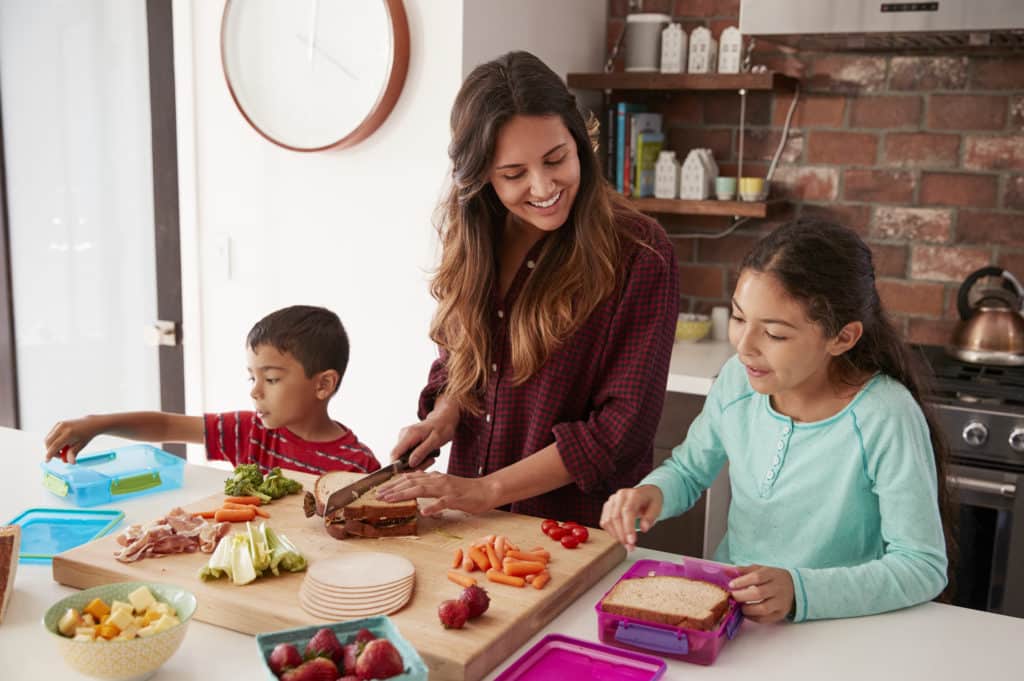Children require adequate sustenance in order to fulfill their potential. Hunger, tiredness, and nutrient deficiencies may pose as obstacles to their academic performance.
A sandwich is perfect for school lunches because it is a tasty, handy, and versatile food item. The whole cereal grains in bread are a source of complex carbohydrates, fiber, and amino acids. Two humble bread slices can become a complete meal with the right filling. Thus a sandwich is an accessible and fast platform to supply more energy, fiber, calcium, iron, proteins, and complex B vitamins for children in a delicious and practical way.
Opening the lunch box to find out that your child didn´t eat the lunch that you made can be terrifying. Sandwiches are easy to prepare and can be made in advance, even from the night before, which can be useful for busy moms. They can be transported with no trouble inside a plastic container, a paper bag or wrapped in foil within the lunch box or the school bag. And forget about reheating! Children usually don´t have time or access to cooking appliances on the school premises.
Sandwiches come in many forms, from open sandwiches and pinwheels, to toasties and baps. Or even cut with cookie cutters into eye-catching fun shapes! Plus sandwiches may be enjoyed anywhere, at room temperature, and without cutlery. Finger food encourages the development of fine motor skills in the youngest and provides a positive sensorial experience at lunch times.
As a mother, spending time and effort in preparing food that your children won´t eat or even touch can be very frustrating. But because sandwiches are a kid´s favorite they provides the opportunity to introduce them to new foods, textures, and flavors; especially when it comes to meats, legumes, and veggies that otherwise they wouldn´t eat on their own at home. Colorful fillings can be used to draw their attention in an easy and inexpensive way.
A sandwich can supply school-aged children with all the nutrients they need to flourish. The Eat Healthfully Plate(Plato del Bien Comer) shows that a balanced meal contains ingredients from the three food groups: cereals and tubers, proteins and legumes, and fruits and veggies.[1] When assembling a sandwich or arranging your children’s school lunch box refer to this guide to ensure that items from all food groups are included.
For example, bread belongs to the cereals food group and supplies energy for the brain, as well as dietary fiber, vitamins, and minerals. Thus it is important to use ingredients from the other two food groups for the fillings.
The ideal sandwich pairs the complex carbohydrates from the bread with good quality proteins either from either animal or plant origin. Flavorsome animal proteins include chicken, tuna, boiled egg, smoked meats, and all kind of cheeses. Beans and other legumes make great plant-based protein fillings due to their smoother consistency. Think of refried beans, nut butters, and humus (a chickpea dip). Add a handful of green leaves, cucumber slices, grated carrot or fruit segments to add extra vitamins and phytonutrients. And finish off with the addition of healthy fats to nurture the brain. Good fats such as Omega-3 fatty acids assist the neurological development and improve children´s social skills.[2] These fats are present in oily fish such as salmon, fruits like avocados, and breads that contain seeds like pumpkin, sesame, sunflower, and chia.
The combination of ingredients is infinite. There are many types of bread to start with. Choose from rye bread, white bread, toasted bread, whole grain bread, wholemeal bread, gluten-free bread, and spelt bread, amongst many other options.
Cholesterol may accumulate in the brain and affect perception, memory, thought, and language.[3] Whole grain bread is an excellent source of dietary fiber, which combats overweight and the accumulation of cholesterol in the bloodstream, as well as promotes good digestion and keeps students satisfied for longer.
Prefer a bread type that is rich in fiber, iron, and complex B vitamins so your children can accomplish their academic goals. Whole wheat bread contains folic acid, and vitamins B1, B2, and B6. Folic acid deficiency may cause children to become irritable, forgetful, and struggle to concentrate.[4] The advantage of wheat bread is that in many nations like Mexico, U.S.A., and Great Britain, baked goods made with refined wheat flour are fortified with folic acid; hence including bread in children´s diet is a good idea to meet folate requirements.[5]
In summary:
Reasons why a sandwich is a great school lunch food item:
- Can be done in advance.
- Travels well.
- Can be eaten anywhere at room temperature.
- Doesn´t require cutlery.
- Each sandwich can be customized.
- Combination of ingredients is infinite.
- Can be a complete meal.
- Complex carbohydrates of bread supply energy.
The ideal school lunch sandwich includes:
- Whole grain bread
- Good quality protein
- Fruits and vegetables
- Healthy fats
[1] https://www.gob.mx/salud/articulos/el-plato-del-bien-comer-una-guia-para-una-buena-alimentacion
[2] http://journals.plos.org/plosone/article?id=10.1371/journal.pone.0066697
[3] http://www.health.harvard.edu/mind-and-mood/boost-your-memory-by-eating-right
[4] http://umm.edu/health/medical/altmed/supplement/vitamin-b9-folic-acid
[5] http://www.who.int/nutrition/publications/micronutrients/wheat_maize_fortification/en/

